Artificial intelligence | 16 Sep 2022 | 12 min
A Complete Guide to AutoML Development

My previous blog: ‘Will Low-code and No-code Platforms Take Over Traditional Machine Learning?’ will introduce you to the Low code/ No code platform.
In today’s blog, let’s discuss its day-to-day application, and when, where, and how it can be used. Although every feature is made for the betterment or for ease of work, it has some pros and cons, so we will also take a look at those.
When it comes to AutoML (i.e., low-code/no-code) in any industry, artificial intelligence (AI) can be used to enhance workflows, predict turnover, and provide recommendations. Simple image classification AI models can be quickly constructed with low-code/no-code platforms and can be utilized in factories to distinguish between a good product and a bad one, or in the healthcare business to detect whether a person is wearing a mask within the premises or not.
Low-code/no-code AI platforms will also benefit businesses in data-driven industries like marketing, sales, and finance. AI can predict churn rates, analyze reports, make intelligent recommendations, automate billing, and much more. There are no limitations to the number of applications that can be created with this platform.
Let’s go through a quick example to see how these platforms work. The data is concerned with the direct marketing campaigns of a Portuguese banking institution. The goal is to predict if the client will subscribe to a term deposit or not.
There are 10 categorical and 7 numerical features in the dataset. With the help of Auto-VIML as a low code platform, outcomes with the best accuracy-driven model can be achieved as follows:
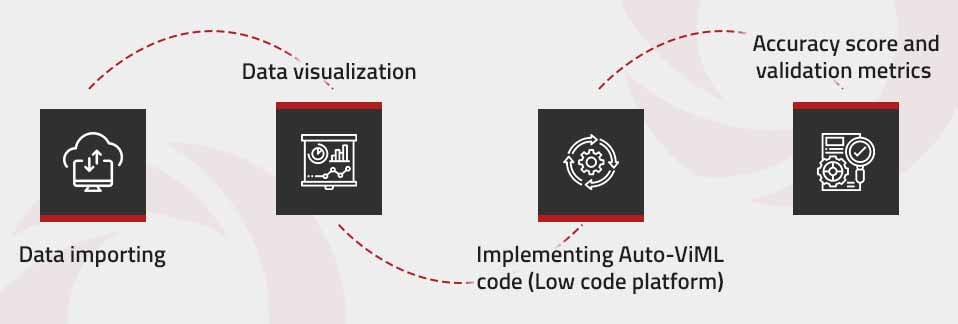
1. Data importing
Let’s get started with our hands-on project by importing a bank marketing term deposit prediction dataset using Pandas Library in Python.
Firstly, import the essential libraries that are needed throughout the project.

Import the dataset:

2. Data visualization:
We can use various means of visualizations for correlating features in the dataset with the target variable. Here we are using Matplotlib and Seaborn to find relation among them.


3. Implementing Auto-ViML code (Low code platform):
Auto-ViML has pre-defined code for a machine learning model in which we have to input the parameters like train, test, target. It takes care of categorical encoding and feature selection. It runs through multiple models and hyperparameter tuning which outputs the best selected model with maximum accuracy.


4. Accuracy score and validation metrics:
Auto-ViML outputs graphical validation metrics such as AUC curve, Confusion Matrix, Threshold graph, ROC-AUC curve, and Recall Value graph.

While analyzing the same dataset using SkyCube as the no-code open-source platform, the process and modelling are very easy to understand as shown below:
1. Importing the dataset:
This no-code platform allows you to drag and drop the dataset into the dashboard which didn’t require any line of code for importing the data as we saw that in low-code platform.
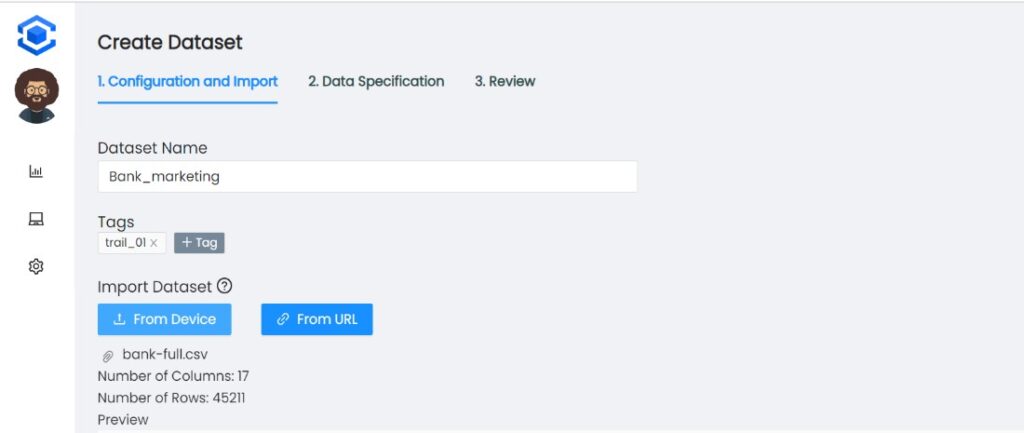
2. Data specification:
The next step will describe the classification of the features of dataset, viz., missing values, standard deviation, length of the data, and visualization.
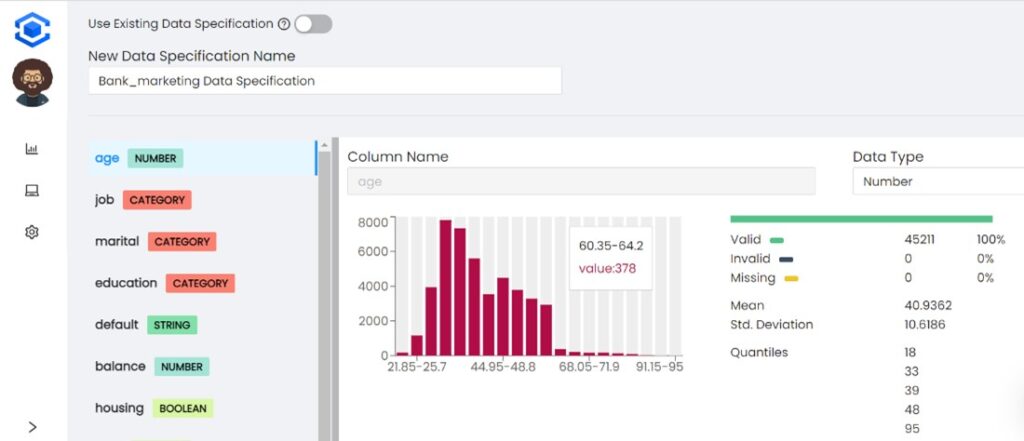
3. Create a machine learning model:
Once data gets loaded, a machine learning model has to be created based on the type of the target variable, whether it is a regression type or classification type. For our dataset, it is classification type.
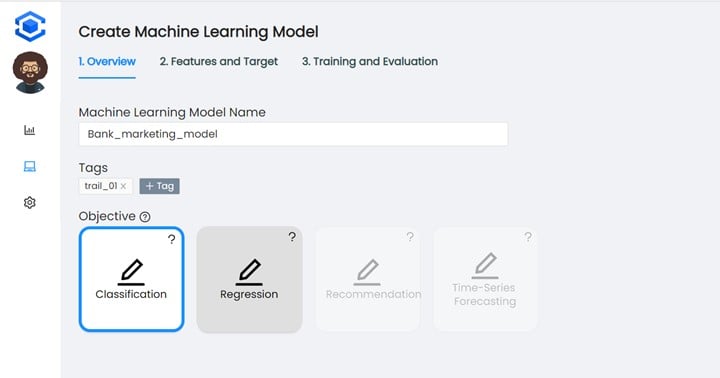
4. Selecting a machine learning algorithm to train:
After model creation, we have to select the machine learning algorithms on which the data need to be trained along with its hyperparameter tunning.
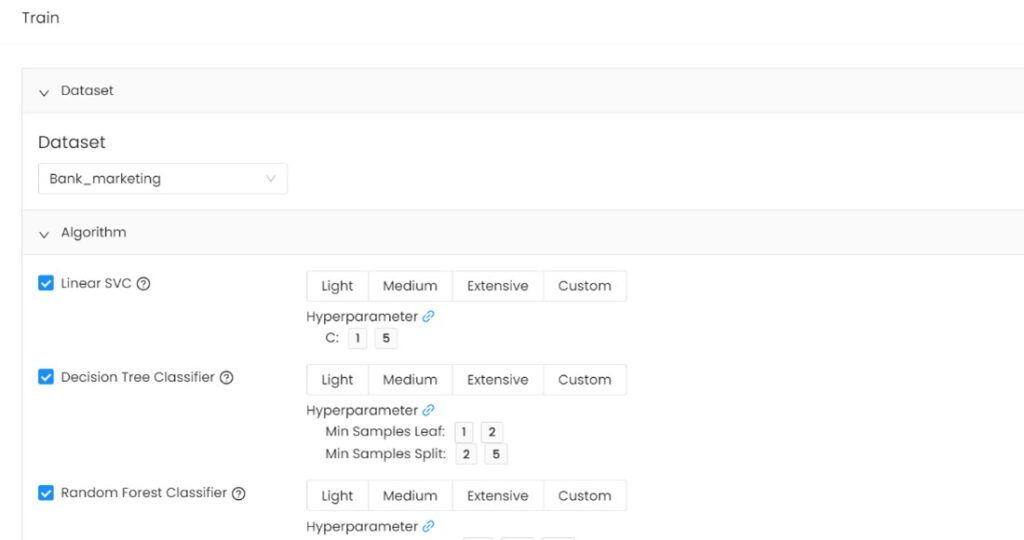
5. Model training and selection of the best accuracy-driven model:
This will be the final step in which the model will be trained, and the best accuracy-driven machine learning model gets selected.
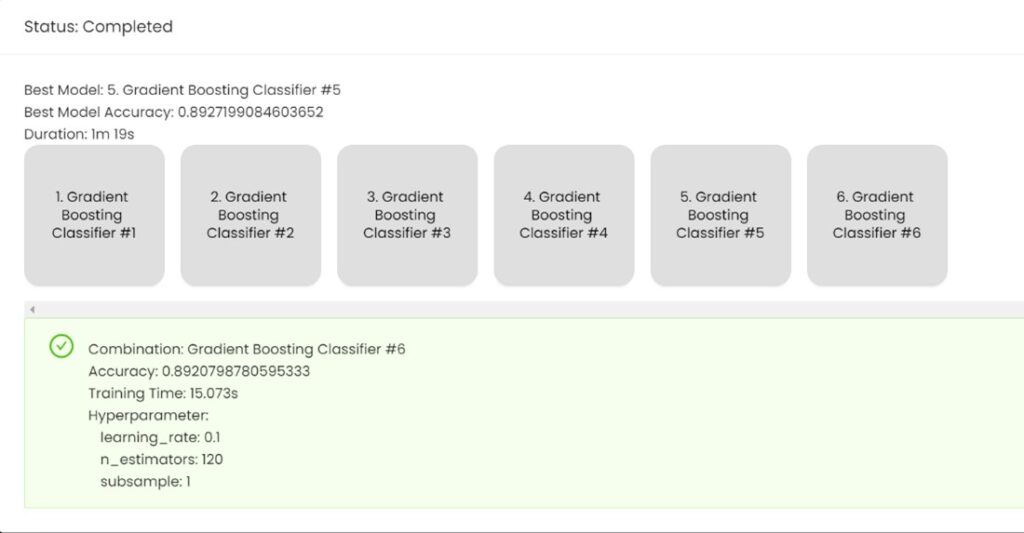
We saw that, in the case of both platforms i.e., low code and no code outcomes have almost the same accuracy score.
Allow me to acquaint you with some of the major pros and cons of low code / no code platforms.
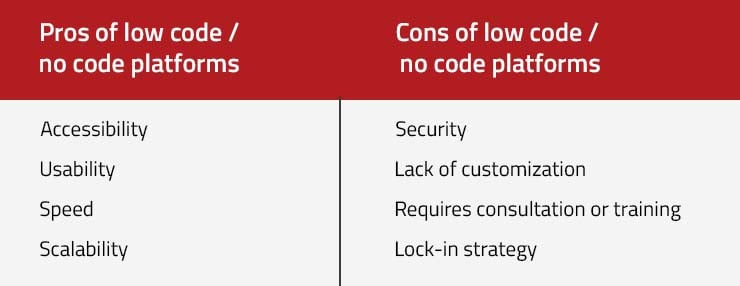
When we discover that there is a better way to do something, we use it to achieve more efficient results in less time. What role do low-code/no-code AI platforms play in this? Here is a list of some of the benefits.
Even while no-code/low-code AI platforms appear to be promising, there are several disadvantages or obstacles to consider when selecting a platform.
So, you might ask, isn’t a low code/no code platform useful? Yes, it is! Will this technology replace the traditional AI/ML platform? No, as this field has a wide range of exploration, this will definitely not completely replace the traditional ML platform.
Furthermore, feature customization on low-code and no-code platforms is limited, whereas when creating AI from scratch, the sky is the limit; you’re free to create the architecture, functionality, and pipeline that best matches your project. Custom model construction, on the other hand, can be expensive and time-consuming. As a result, our best chance for simplifying and speeding up processes is to use low-code/no-code platforms to handle extremely specific tasks in your pipeline.
Feel free to write to us to share your views about this blog and visit us at Nitor Infotech to learn about how we leverage cutting-edge technology to partner businesses like yours through digital transformation.


we'll keep you in the loop with everything that's trending in the tech world.
